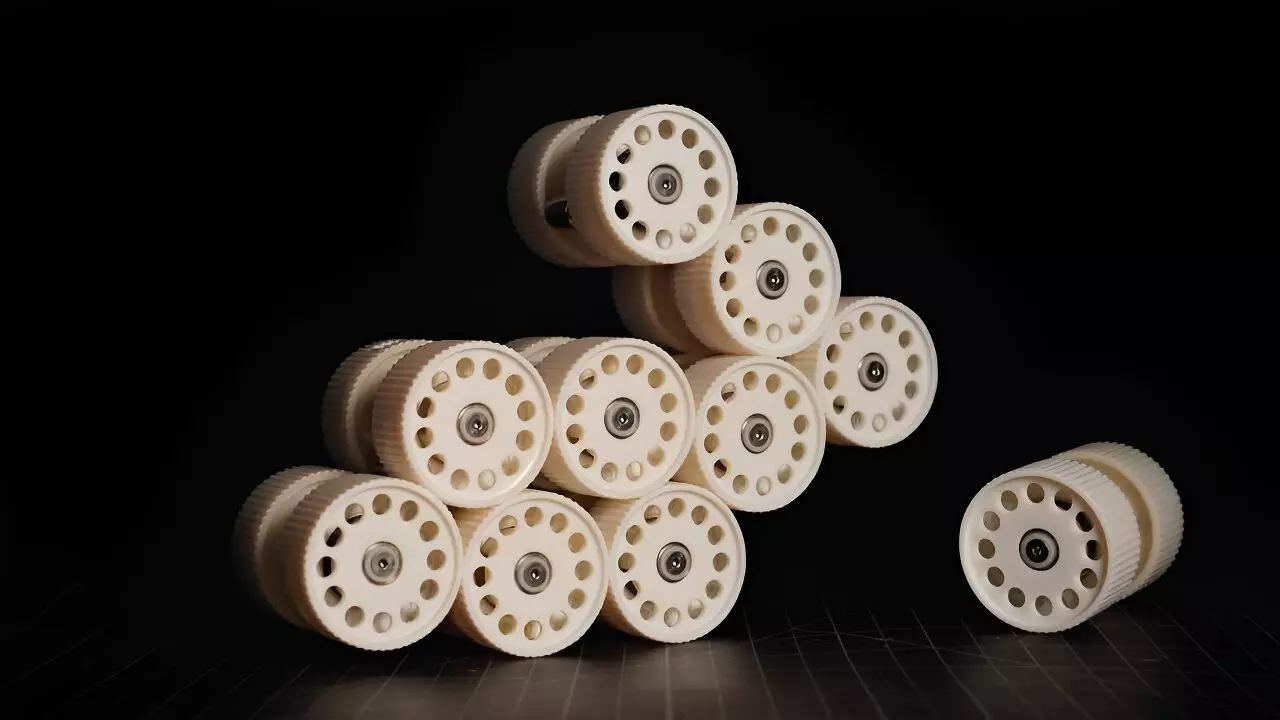The concept of swarming behavior, observed in various natural phenomena such as schools of fish and colonies of bees, has fascinated physicists like Heinrich Jaeger and Baudouin Saintyves. These physicists from the University of Chicago have delved into the realm of fluid mechanics to explore the intriguing world of swarming. Their latest creation, the “Granulobot,” draws inspiration from swarms’ ability to flow like liquid, act collectively without a leader, and respond to their surroundings. This modular and adaptive robotic system can split apart, reassemble, and adapt to different environments with ease.
The Unique Design of Granulobot
The Granulobot comprises simple cylindrical units equipped with two magnets that allow them to connect and interact. By rotating around the cylinder’s axis, these units can push and spin their neighboring units, leading to a collective movement similar to that of a swarm. This innovative design blurs the lines between soft, modular, and swarm robotics. Developed in collaboration with experts from the Illinois Institute of Technology, the Granulobot’s versatility and adaptability make it a breakthrough in the field of robotics.
Jaeger emphasizes the importance of soft robotics in applications where robots interact with humans. The ability of robots to change shape and transition between rigid and soft states is crucial for tasks such as search and rescue operations. Soft robotics enable robots to navigate complex terrain and access confined spaces, enhancing their functionality and safety. Granular materials play a key role in facilitating these shape-shifting capabilities, transitioning between liquid and solid behaviors through a phenomenon known as jamming.
Jamming, akin to a traffic jam in a granular material, causes particles to come together and stop flowing. This phenomenon is leveraged in the Granulobot’s design to enable it to switch between malleable liquid-like behavior and a more solid state. A soft robotic gripper made from ground coffee demonstrates the effectiveness of jamming in grasping objects of varying shapes. The ability to transition between different states allows robots to perform diverse functions and adapt to changing environments.
While the current Granulobot prototype showcases a modular and self-organizing approach, there is potential for scalability and miniaturization in the future. Jaeger envisions thousands of tiny units functioning as a collective mass, or even larger modules for different applications. The principles underlying the Granulobot’s design transcend scale and environmental conditions, making it a versatile and adaptable robotic system with promising applications in various settings.
Saintyves and Jaeger, as physicists, view the Granulobot as more than just a technological advancement in robotics. They see it as a platform to explore new ways of thinking about matter and energy transfer. By studying self-coordination and energy distribution within the system, they aim to blur the line between programmable materials and autonomous robots. This holistic approach not only advances robotics but also expands our understanding of the fundamental principles governing the interaction of matter and energy in dynamic systems.


Leave a Reply